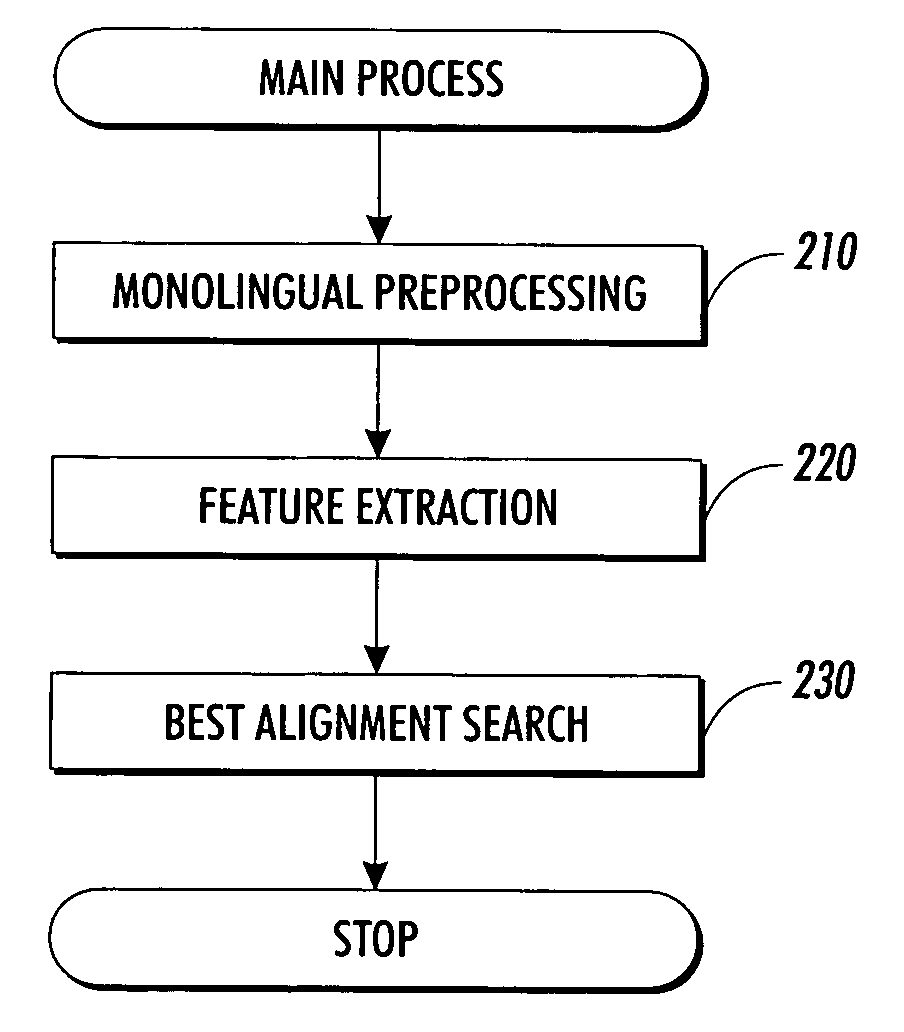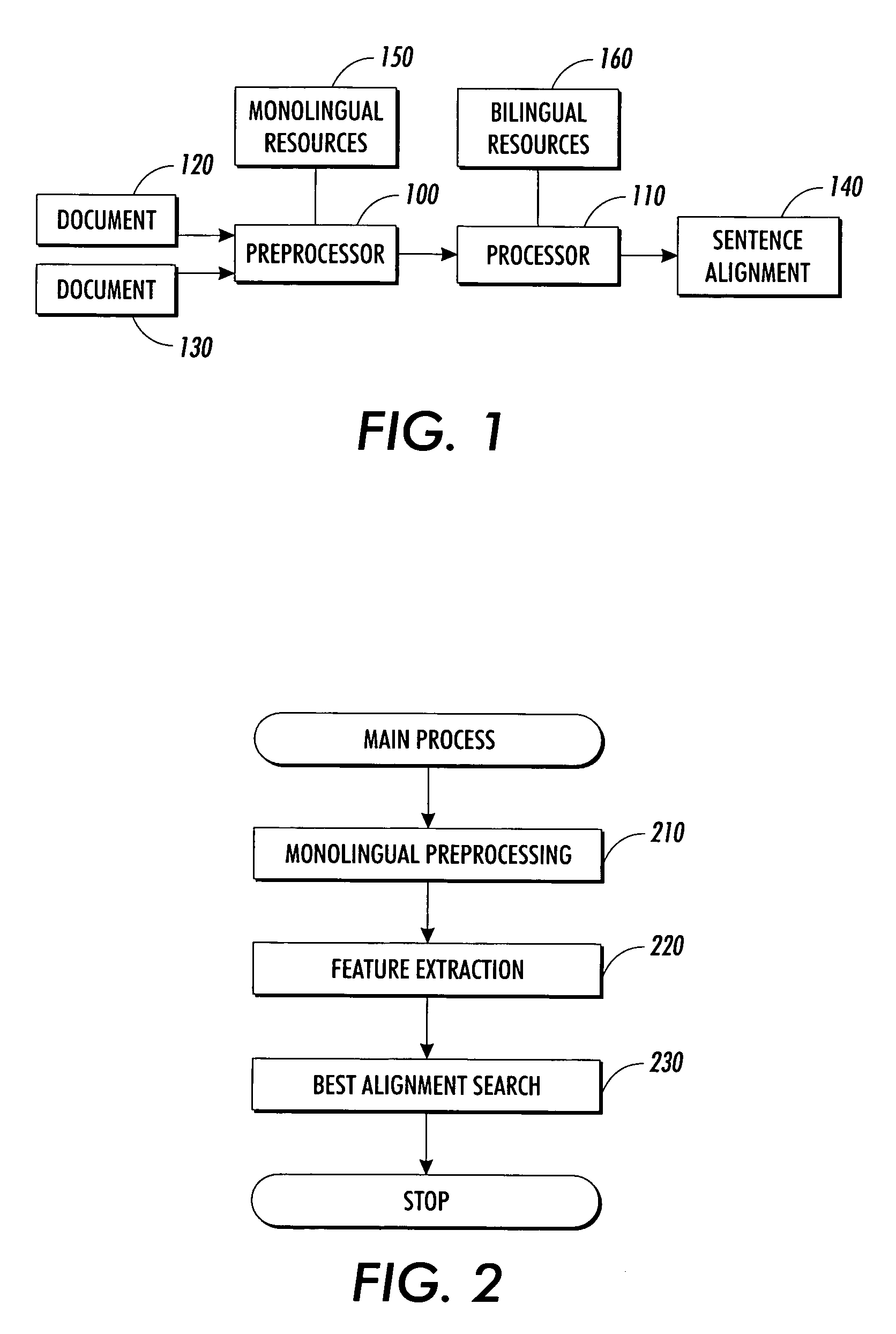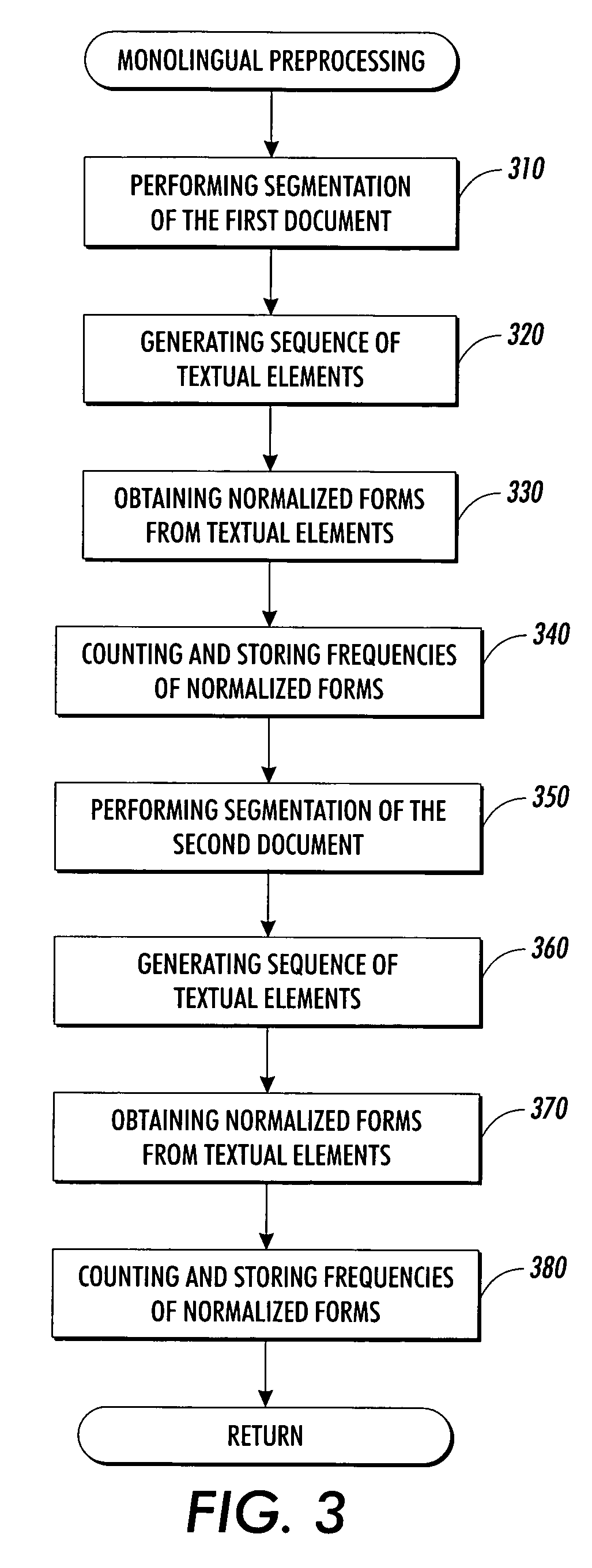Extracting sentence translations from translated documents
a translation and sentence technology, applied in the field of extracting sentence translations from translated documents, can solve the problems of ignoring most available information, prone to noise, and ignoring knowledge-poor approaches, and achieves the effects of robust against noisy data, fast processing, and high quality
- Summary
- Abstract
- Description
- Claims
- Application Information
AI Technical Summary
Benefits of technology
Problems solved by technology
Method used
Image
Examples
Embodiment Construction
[0029]The illustrative embodiments of the present invention will be described with reference to the figure drawings wherein like elements and structures are indicated by like reference numerals.
[0030]Referring now to the drawings and particularly to FIG. 1, the system according to a preferred embodiment of the present invention comprises a pre-processor 100 and a processor 110. The pre-processor 100 receives two source documents 120, 130 which are assumed to contain the same text in different languages. Preferably, the given texts represent the same contents in essentially the same order, and deviations in order are considered only on the level of small groups of sentences. The pre-processor 100 performs monolingual pre-processing and extracts monolingual lexical and structural information by accessing monolingual resources 150. This will be described in more detail when discussing the process depicted in the flow chart of FIG. 3.
[0031]The output of pre-processor 100 is forwarded to...
PUM
 Login to View More
Login to View More Abstract
Description
Claims
Application Information
 Login to View More
Login to View More - R&D
- Intellectual Property
- Life Sciences
- Materials
- Tech Scout
- Unparalleled Data Quality
- Higher Quality Content
- 60% Fewer Hallucinations
Browse by: Latest US Patents, China's latest patents, Technical Efficacy Thesaurus, Application Domain, Technology Topic, Popular Technical Reports.
© 2025 PatSnap. All rights reserved.Legal|Privacy policy|Modern Slavery Act Transparency Statement|Sitemap|About US| Contact US: help@patsnap.com



